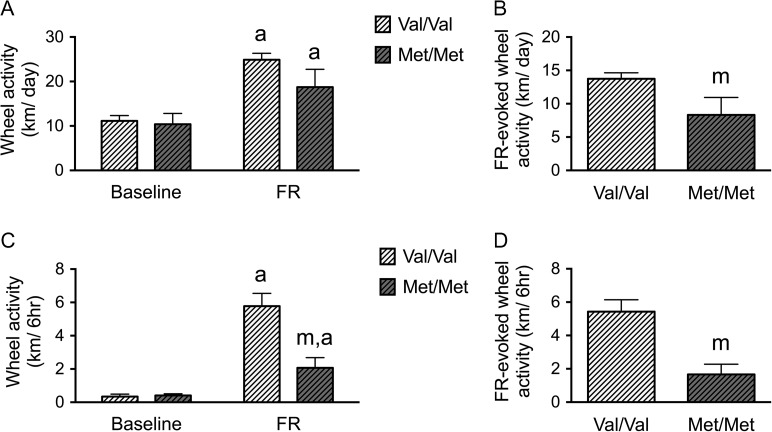Figure 4.
BDNFMet/Met mice show reduced vulnerability to ABA during adolescence. (A) Average wheel running activities of BDNFMet/Met mice (Met/Met) and WT (BDNFVal/Val) littermates (Val/Val) under ABA. Both BDNFMet/Met and WT mice increased wheel running significantly after FR. (B) The difference of wheel running activity between baseline and during FR (FR-elicited wheel running activity) was decreased in BDNFMet/Met mice compared with WT littermates. (C) Both BDNFMet/Met and WT mice increased running during the 6-h preceding feeding (food anticipatory activity, FAA) significantly after FR. BDNFMet/Met mice expressed lower FAA, compared with WT littermates but no difference in baseline running activity. (D) The difference of FAA between baseline and during FR (FR-elicited wheel running activity during FAA) was decreased in the BDNFMet/Met group, compared with the WT littermate group. Bar graphs represent means ± SEM. In Panels A and C, “a” indicates statistically significant effects of ABA, compared with baseline, as assessed by repeated measure ANOVA, followed by Bonferroni's test (n = 8 for WT, and 6 for BDNFMet/Met). In Panels B and D, “m” indicates a statistically significant genotype effect, by comparing to the values of WT littermates by student-t test. In Panel C, “m” indicates statistically significant genotype effect, by comparison to the WT littermates, as assessed by repeated measure ANOVA, followed by Bonferroni's test.

